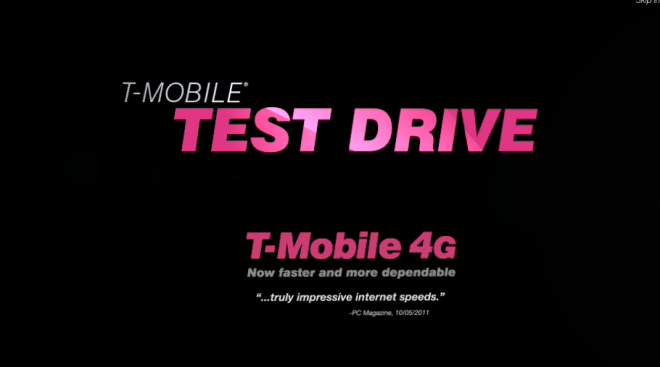T-Mobile Says “Backhaul Strategy Key To A Competitive 4G Experience”
T-Mobile’s newest blog post wants you to know that the key to the company’s 4G success, is the backhaul. “Backhaul provides the connection cell sites to the internet. The bigger the “pipe,” the more mobile data traffic the network can move quickly.”
T-Mobile began its own massive backhaul rollout in 2007, before it offered even offered 4G. Well, it’s that “aggressive rollout” that is helping T-Mobile “deliver a competitive, fast and dependable 4G experience.”
So what does this mean for T-Mobile moving forward? The good news is that this rollout will help T-Mobile to “rapidly deploy LTE in 2013.”
In other words, T-Mobile is saying that events over the past 5 years will all culminate in their position to continue offering a “competitive 4G experience for years to come.”
All this is well and good and I appreciate T-Mobile’s blog posts, but these are the kind of things I know everyone wants to see in practice, not in writing. Still, I’m glad to know that T-Mobile is positioned to deploy LTE in 2013 in a rapid fashion. That’s sure to please the masses and hopefully they can cover those areas currently devoid of 4G coverage, making for happy customers everywhere.
Full Press Release:
T-Mobile’s Backhaul Strategy Key to a Competitive 4G Experience
By Dave Mayo, Senior Vice President of Technology Strategy, Finance & Development
There’s been a lot of discussion about the strengths and weaknesses of various 4G technologies, but without sufficient backhaul, none of it matters. Backhaul provides the connection from cell sites to the internet. The bigger the “pipe,” the more mobile data traffic the network can move quickly. A 4G network without appropriately dimensioned backhaul is like building a mile of six-lane highway (the radio network) that converges into a one lane dirt road (Time-division multiplexing (TDM) circuits). The six-lane highway looks great and drivers expect to move quickly, but everyone will encounter a backup because of the one lane dirt road.
A 4G network is only as good as its backhaul. If enhanced backhaul capacity isn’t available, the customer experience suffers. T-Mobile began an aggressive rollout of enhanced backhaul in 2007 – well ahead of our competitors and long before we began to offer 4G – which has enabled us to deliver a competitive, fast and dependable 4G experience. T-Mobile has enhanced backhaul covering 100% of our 4G network, 95% of which is fiber backhaul.
Our aggressive rollout of backhaul means:
- A competitive 4G experience today – We continually strive to provide a fast and dependable 4G experience, and our aggressive deployment of cell site backhaul is one of the reasons our 4G network outperformed Verizon’s LTE network in download speeds in 11 markets in PC Magazine’s recent Fastest Mobile Networks test.
- A speedier rollout of LTE in 2013 – Because we’ve already upgraded to fiber backhaul on over 32,000 cell sites, the transition to LTE will be a much faster process, enabling us to rapidly deploy LTE in 2013. In contrast, some of our competitors continue to use T1s at cell sites for backhaul which provide a slower connection to the Internet.
At the end of the day, 4G comes down to experience. Because of the strides T-Mobile has made with our backhaul strategy over the last 5 years, we are well positioned to continue offering a competitive 4G experience for years to come.

